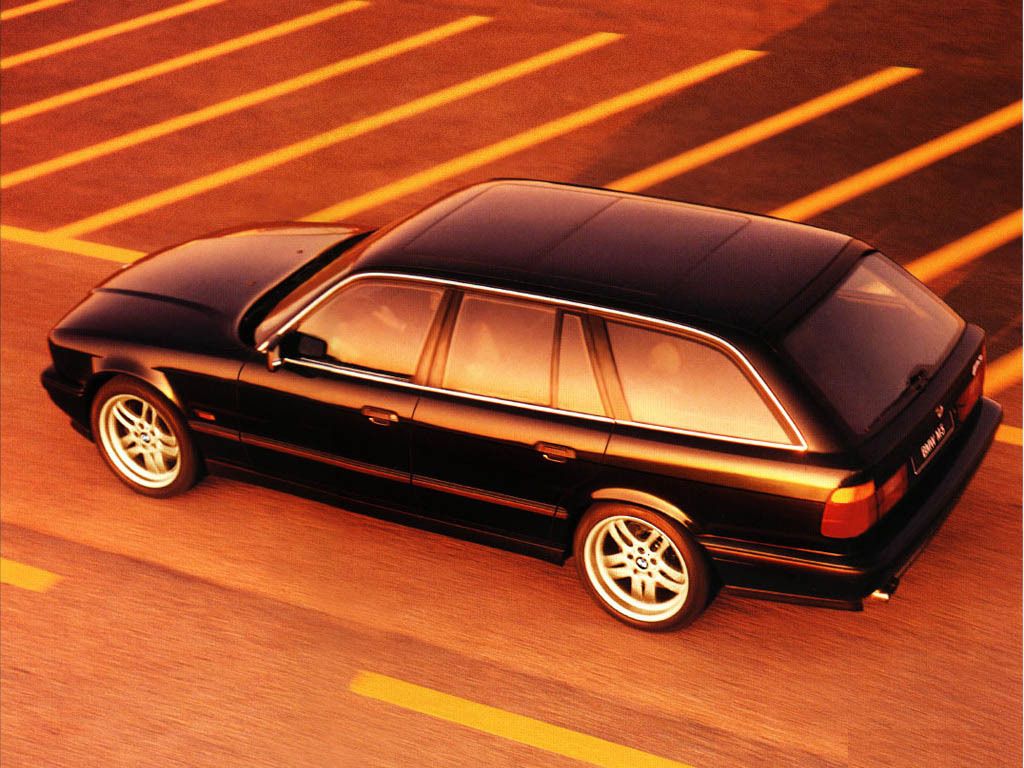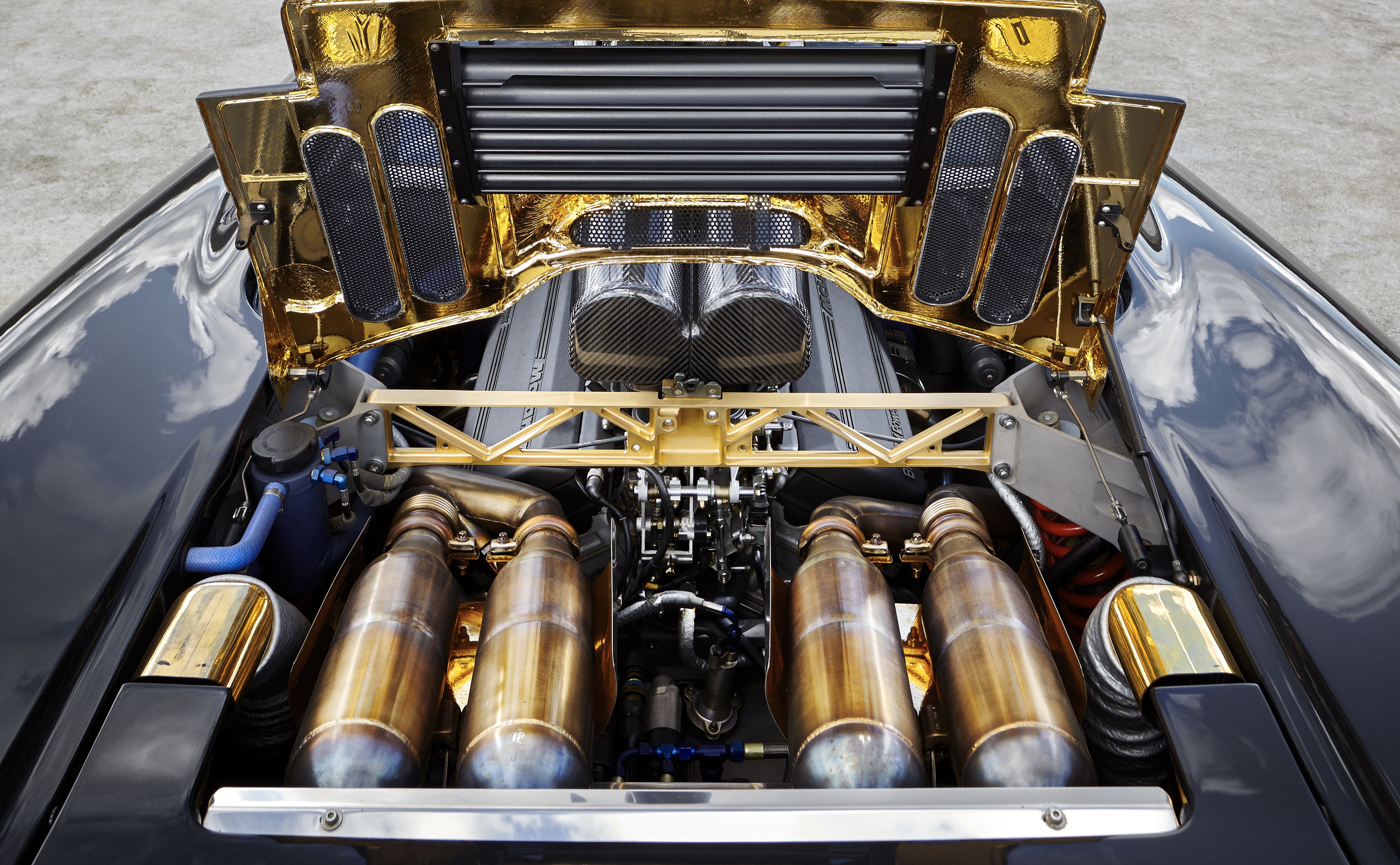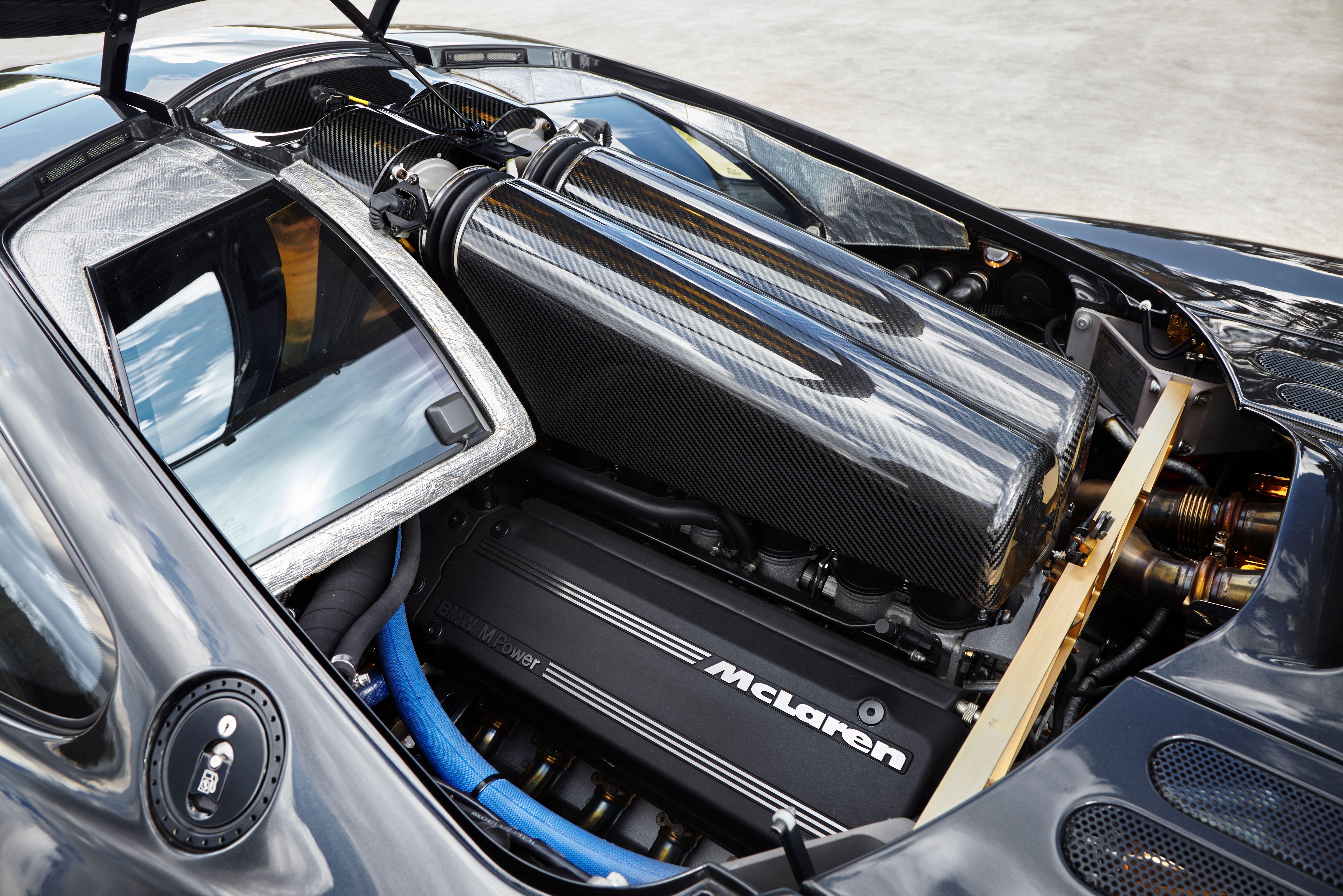Look at the E34-generation BMW M5 in station wagon form. Does it look like a 311 horsepower family hauler? Yes, the wheels are bigger but, otherwise, it looks like any other 5 Series at the same time. While this is a stark contrast compared to modern-day M5s, what makes the M5 we'll talk about today truly unique is the fact that it actually packs the magnificent Paul Rosche-designed S70/2 6.1-liter V-12 designed by BMW for use by McLaren in Gordon Murray's F1 supercar. We'll spare a few seconds before you move on so you can get rid of all the drool.
The E34 M5 was built between 1988 and 1995, and it was the second-generation 5 Series to receive the full-blown M treatment after the sleek and stylish E28. The E34 was decidedly more boxy and less shark-looking than its predecessor, but it also packed a bigger punch. In North America, it came equipped with the S38B36 3.5-liter inline-six throughout its lifetime although folks back in Europe got to try out the 3.8-liter S38B38 from 1991 onwards that came with 24 extra ponies.
Still, the E34 was very fast even with the 3.6-liter unit as it allowed for a 0-60 mph time of just 6.3 seconds. This is impressive considering a standard 530i equipped with the 3.0-liter, DOHC, V-8 (good for 215 horsepower and 214 pound-feet) needed about 8 seconds to reach 60 mph from a standstill. Now, just take a moment and imagine how fast the M5 became once BMW crammed in the 618 horsepower V-12 of the F1 along with its 479 pound-feet of torque...
While this is an M-badged BMW, it may be the best sleeper ever
A sure, albeit potentially harmful, way of increasing your car's performance is by swapping its original engine for another more powerful and torquey one. You see almost every day the countless "LS Swap It" memes and many others alike but swapping engines isn't something that's only done by those that want to get more oomph without breaking the bank. Big-name manufacturers also do it from time to time, usually as a way of testing various components or, simply, just to show off.
"It's an outrageous thing," Clark said of the car, claiming that he actually drove it during his four-year tenure at the helm of the then-new road car program. He also established in the conversation with Harris that BMW did not scrap the car and that the company still has it stashed away somewhere at an undisclosed location along with other prototypes. Apparently, nobody outside of BMW and McLaren employees has ever seen this beast of an M5.
The 1993 McLaren F1's engine has aged like fine wine
McLaren was a force to be reckoned with in Formula 1 in the mid-to-late '80s. Ron Dennis' operation and its MP4 series of single-seaters delivered the goods in 1984, 1985, and 1986 (with Niki Lauda and Alain Prost doing the driving respectively, and with some inadvertent help from Williams), and again in 1988 and 1989 during the short-lived Senna/Prost cohabitation that ended when Prost moved to Ferrari for 1990. Still, the new decade was just a new chance for McLaren to rack up more titles and that's exactly what it did, Senna becoming champion for the second and third time in 1990 and in 1991. The first titles came with Porsche-TAG power behind the driver while the last four were powered by Honda. But the relationship between Honda and McLaren started to go sour, and McLaren started looking elsewhere for an engine provider.
As you've read time and again, Gordon Murray, McLaren's Technical Director at the time, wanted to make the F1 on his own terms and, luckily or him, he was given by Dennis a blank cheque that allowed him to really go at it.
"I remember being moved, thinking, ‘It is remarkable how our vision comes through in this car," Murray said. "The moment I drove the ‘little' NSX, all the benchmark cars - Ferrari, Porsche, Lamborghini - I had been using as references in the development of my car vanished from my mind. Of course, the car we would create needed to be faster than the NSX, but the NSX's ride quality and handling would become our new design target." Indeed, the F1 offered seating for three, it was rather softly sprung compared to modern supercars, and you also got a Kenwood-supplied stereo and air conditioning - all in a car that weighed 2,508 pounds, over 500 pounds less than the P1, or about as a Miata NC.
All of these details, including the insane transverse Weismann six-speed box with E34 synchronizers, needed a heart to keep them alive and that heart came from one of McLaren's old rivals in Formula 1, BMW, the engine supplier for Brabham in the years when Nelson Piquet won the title. As it happened, the same man that designed the legendary 1.5-liter, four-cylinder M12/M13 turbocharged mill that ushered to Grand Prix victory such cars as the Brabham BT52, also designed the engine in the middle of the F1's monocoque.
And you really wouldn't want to ruin a jewel of an engine quite like this one. Rosche and his team designed and built the first engine in just nine months, and McLaren presented it in the F1's press release as a "new four-cam, 48-valve unit of extraordinarily compact design, sharing nothing with BMW’s unrelated smaller-capacity production-line V-12." The name of this 6.1-liter mammoth that put out 627 horsepower and 479 pound-feet of torque - namely S70/2 - may make you think that's related to the S70, the 5.6-liter V-12 derived from the 5.0-liter M70 V-12 that was fitted to the 850CSi 5.6 (E31). Only the M8 prototypes featured four valves per cylinder like the S70/2, but the M8 never made it into production.
According to unixnerd.com, the two-cylinder heads were based on those from the S50B32 found in the E36 M3 Evo, and there was one coil per cylinder, double VANOS, and 12 individual throttle bodies. The flywheel was made out of aluminum, and it was fitted with no less than four oil scavenger pumps as well as a dry-sump since Murray designed the F1 to pull insane G's at will. Max power was available at 7,400 rpm while max torque was there from 6,700 rpm. You may think that 479 pound-feet is not much considering cars today come with over 700 torque, but then you don't really need more. "Basically, he just put it in gear, didn’t touch the throttle," said Roger Chatfield, McLaren composites technician, referring to his ride in an F1 driven by Creighton Brown, McLaren Director. "The car started moving away. Next gear, car moving away, still no throttle. We’re just going up through the gears with no throttle. It’s like, this is bogus. This shouldn’t be working."
Further reading
Read our full review on the 1995-1997 McLaren F1 GTR.
Read our full review on the 1997 Gulf McLaren F1 GTR Longtail.
Check out more details on the McLaren F1 GTR ‘25R’ Restoration.
Read our full review on the 1993 McLaren F1.
Read our full review on the 1995 McLaren F1 LM



